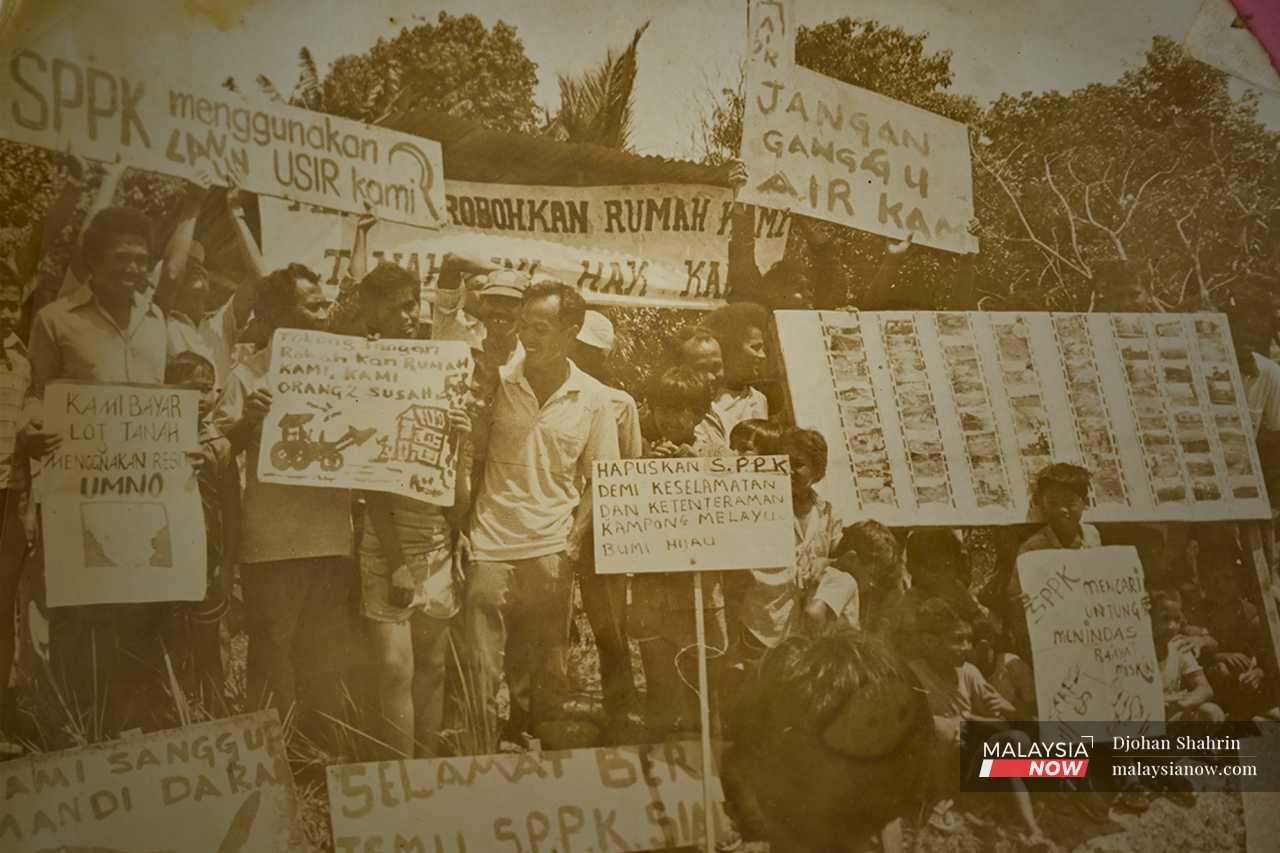Amid Merdeka celebration, villagers recall fight for their home
Kampung Melayu Bumi Hijau is long gone, but the struggle to keep it has given its inhabitants a new outlook on independence.
Just In
Rawiyah Kamil is in her 80s but still remembers her home long ago in Kampung Melayu Bumi Hijau, a thriving village which lives only in her memory today.
Kampung Melayu Bumi Hijau was once located at the site of Tunku Abdul Rahman University College in Setapak, Kuala Lumpur.
At first, Rawiyah said, the area was only used for farming. Eventually, though, houses began to spring up, until there were about 1,000 villagers.
One day, the authorities came.
"They said the houses that we built had to be torn down, even though we had bought the land in question," she said.

She said the homes had to be demolished as the developer, SPPK Sdn Bhd, wished to develop the area. In return, the villagers would be given units at a four-storey flat in Taman Melati.
While some of the villagers agreed to the exchange, 13 families including Rawiyah's refused. Instead, they formed a committee to defend their land.
Meanwhile, the development work had begun. One morning, Rawiyah saw a tractor digging up the ground in the village area.
"The villagers began to gather," she said. "We were angry with the police. Why were they allowing the developer to do as it pleased?
"One of the policemen pulled at me and tried to drag me away. When I fell, two others and a member of the Federal Reserve Unit (FRU) kicked my leg and stepped on my right thigh with their boots.
"They also pressed an M16 gun against me while they put me in handcuffs," she said.
Rawiyah also recalled hearing another villager pleading with the officers to release her.
At that point, she was in her 30s and had three children. Her husband, Sulaiman Yaakub, was repeatedly detained in the police lock-up due to the land matter, while Rawiyah herself was charged in court.
"The judge said that I was hysterical," she said. "But I knew what I was doing. The judge only wanted to appease the developer.
"For three days, the police and the judge talked about ruling that I had been hysterical."
But despite the villagers' efforts, Kampung Melayu Bumi Hijau eventually disappeared, leaving behind only old newspaper clippings and documents as reminders of what had once been.
Those who covered the affair included prominent economist Jomo Kwame Sundaram, who was tasked as a reporter to follow the case.
Activists who defended the villagers meanwhile included Parti Sosialis Malaysia chairman Mohd Nasir Hashim, Syed Husin Ali and Pasir Gudang MP Hassan Karim.
Speaking to MalaysiaNow, Abdul Malik Ishak recalled how Rawiyah's husband Sulaiman had invited him to stay at Bumi Hijau.
The former soldier said all of the villagers had come together to help him build his house.

At that time, he said, the village had no water source and the villagers had collected water from the nearby hills.
He, too, spent time in the lock-up for objecting to the development activities.
"We went to the SPPK office in Damansara for a peaceful handover of a memorandum," he said.
"But they brought in the FRU to scare us, even though they didn't need to get mixed up in our affairs."
After that, he said, some of the villagers who had gone to hand over the memorandum were taken to the Brickfields police station for questioning.
"They took me, too, and my child who wasn't even in school yet," he said.
Othman Manap, another former villager, blamed the developer for instigating the situation.
"At first, we were considered squatters, but then the lawyers acknowledged us as urban settlers," he said.
"We had land lots and houses, but not all right next to each other like slum areas."
Othman said the villagers and SPPK had held talks where the developer agreed to find a new site for them to move to. But he said there were not enough facilities at that site.
"SPPK went ahead with the construction even though we had a court order stating that no work could be done as long as the infrastructure at the new site was not complete," he said.
Eventually, the facilities were put in place by another developer, Titijaya, and the villagers moved in around the late 1990s.
The site is now known as Taman Rawiyah Sulaiman Jaya, in recognition of Rawiyah and Sulaiman's efforts to protect their land.
Four decades later, Rawiyah said the concept of independence had taken on a new meaning for her and the other villagers, especially in the face of their latest challenge: the construction of the East Coast Rail Link.
"Independence means the freedom to live undisturbed, without threat to the forests.
"We have a government, but where is it when the people live like this? Independence is not just for the government, it's for the people as well.
"When there are people, only then there is independence."
Subscribe to our newsletter
To be updated with all the latest news and analyses daily.
Most Read
No articles found.
